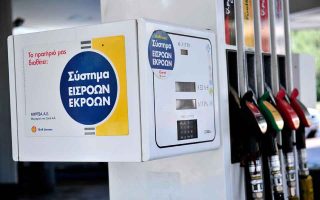VAT gap remains very high

The number of card transactions carried out in Greece grew 20-fold in the period 2014-2022, with their value increasing nine times at the same time.
Yet despite the rapid increase in card use observed in Greece, initially after the imposition of capital controls in 2015 and then due to the pandemic, the use of cards in proportion to private consumption remains at low levels compared to the rest of the European Union. This implies significant losses for public coffers, since the widespread use of cards boosts value-added tax collection; it is no coincidence that Greece still has the third largest gap among the EU member-states in VAT revenues.
According to a study by the Foundation for Economic and Industrial Research (IOBE), titled “Electronic Payments in Greece after the Pandemic Era,” the annual positive effect of the expansion of card payments on VAT revenues is estimated at around 600 million euros for 2022. Furthermore, €10 of new card spending in 2022 is associated with an average of €0.67 of previously uncollected VAT revenue due to undeclared transactions.
VAT revenue increased in 2022 to 11.7% of total consumption from 8.7% in 2015, with the VAT gap (percentage of annual VAT revenue not collected) falling to 17.8% in 2021 from 26% in 2015. It remains, however, the third largest gap among EU member-states, after Romania and Malta, with the EU average rate well below 5%.
Certain categories of electronic payments have a higher correlation with tax compliance. It is estimated that digital payments for professional services, education, healthcare, restaurants-bars etc are linked to lost VAT revenue, as this is where a large percentage of tax evasion is traditionally recorded due to non-issuance of receipts or the issue of receipts that indicate a lower amount than what has actually been collected by the professional or business.
The above is also presumed from the data on card transactions in the services sector: In 2023 almost four out of 10 card transactions involved services, while in 2015 the corresponding ratio was less than two out of 10.





